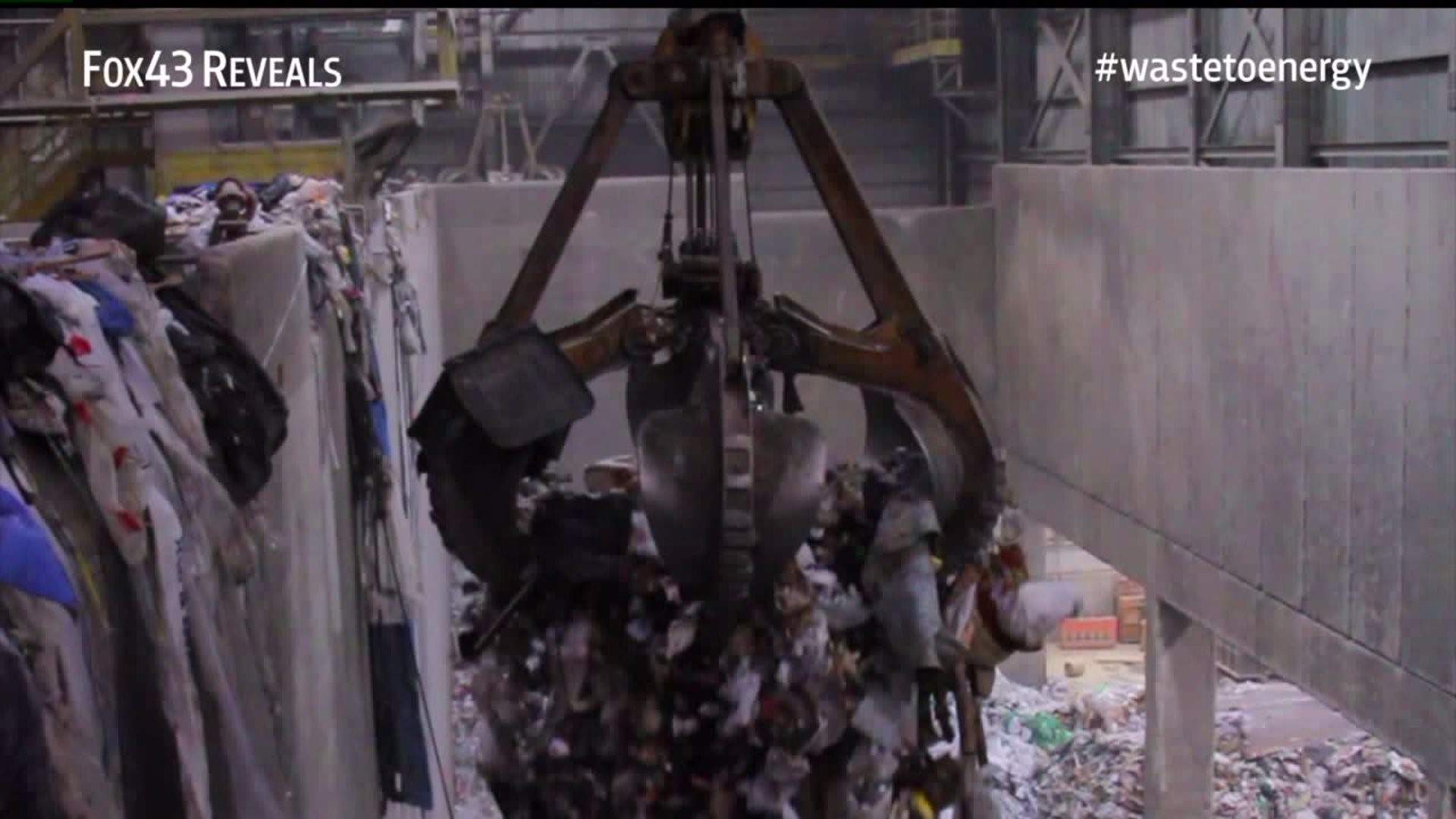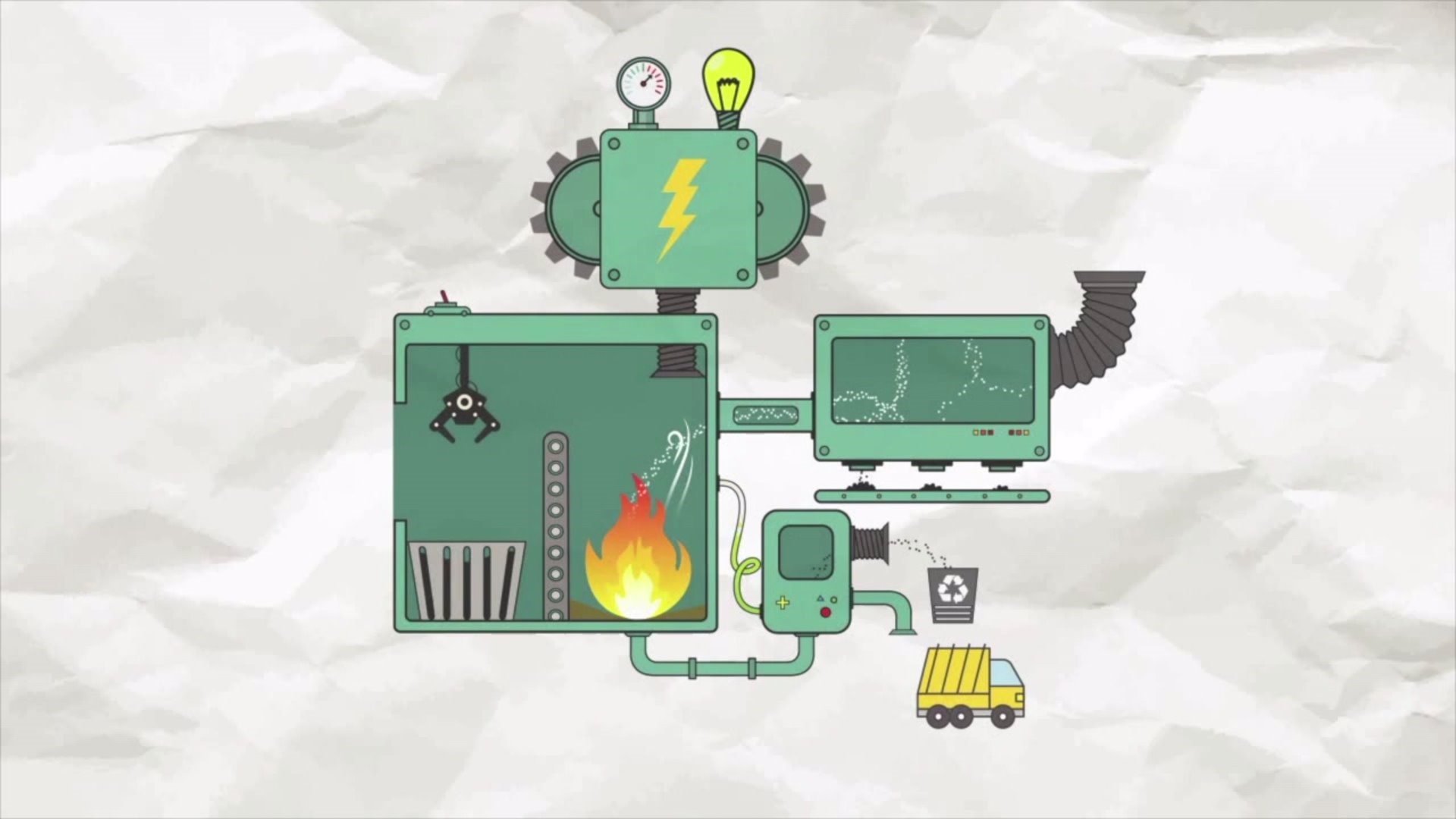Lancaster County, Pa. – Waste-to-Energy (WTE) facilities rival landfills and have spurred a debate over which is the better choice for communities: burn or bury trash? FOX43 Reveals the energy opportunities and environmental obstacles of generating power from waste.
The Waste-to-Energy Facility in Conoy Township converts 1,200 tons of waste into renewable energy every day—producing enough energy to power 30,000 area homes. Kathryn Sandoe from Lancaster County Solid Waste Management Authority (LCSWMA) shows FOX43 Reveals the operation.
“In the storage pit currently, we estimate there is anywhere between 5,000 and 5,500 tons of waste. We’re going to reduce the volume of the size of this by 90 percent,” Sandoe said.
Here’s how it works:
During the waste combustion process, ferrous and non-ferrous metals are recovered from the remaining ash, called bottom ash, and recycled. From the charred pile, Sandoe picks up a metal fork, spatula, and the lid of a can. “These things, we don’t want people to put in their recycling bin because the MRF, the recycling processor, can’t pull this out,” Sandoe explains. “Don't put it in your recycling bin. Throw it in your trash and we'll get it on the back end."
The bottom ash is quenched with water, taken to the Frey Farm Landfill, and used as a daily cover. Sandoe said LCSWMA’S facility has extended the life of the landfill by 18 years since the WTE facility opened in 1991.
However, environmentalists are worried about long-term global impacts. Sarah Dawson, director of the Center for the Sustainable Environment at Franklin and Marshall College, said waste combustion creates a new concern.
“It creates something called super-toxins,” she explains. “Those are things like dioxins and furans, which are some of the most toxic compounds known to man.” Those compounds are found in fly-ash, a byproduct of the combustion process. Fly ash is filtered out in a baghouse by pollution control equipment. It is later mixed in with the damp, bottom ash that is taken to the landfill.
That’s what makes Dawson concerned.
“Anything that is toxic that is in our products, is going to be liberated through the combustion process,” she said. “If we have lead, if we have arsenic, if we have mercury in something that we are burning, it’s going to come out.”
And trace amounts do. It is inevitable – but minimized. LCSWMA showed FOX43 Reveals their extensive emission control system used to monitor, trap, and limit the release of toxins.
“When it comes to people might be worried, what is the environmental impact, is this safe? There are strict regulations in place that have said this is what we believe is a safe level and you have to stay at that or below that. [Those levels] are monitored 24/7.”
FOX43 Reveals followed up with the State Department of Environmental Protection (DEP), which is the primary oversight authority for LCSWMA’S Waste-to-Energy Facility. Each facility must obtain a state operating permit from the DEP that sets emission limits. Those limits vary for individual facilities depending on a number of factors, such as when they were constructed.
FOX43 Reveals obtained LCSWMA’S state operating permit for their Waste-to-Energy Facility and compared it to the plant’s most recent report on air emission levels. Testing took place between March 25th and April 4th in 2019 and the report shows the plant is in compliance with their permit levels. You can see Air Emission Reports from DEP's Bureau of Air Quality by clicking here.
According to records from the U.S. Environmental Protection Agency, in 2018 LCSWMA’S WTE Facility reduced greenhouse gas emissions to the equivalent of 18 million trash bags. On the other hand, it also emitted as much carbon dioxide as nearly 92,000 cars. Environmentalists believe the solution to a sustainable community isn’t about how we get rid of trash – it’s how we make it.
“Toxins in to products, toxins are coming out,” declared Dawson. “They’re coming out either through landfill leach or they’re coming out through the burning of these things. What we want to do is create things that aren’t toxic to begin with that can decompose into things that will fuel plant growth, that will allow animals to eat them, and it will be safe and healthy.”
FOX43 Reveals issues that impact you and your family to keep you informed. Do you have a tip that needs to be investigated? Or documents we should dig into? Send us a confidential news tip at FOX43Reveals@fox43.com.


